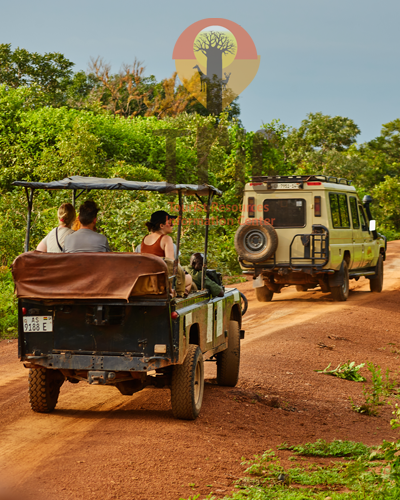Tamale is located on the crossing of three ancient trade routes; it started to grow as a commercial centre for the Northern region centuries ago. The north–south road from Paga and Bolgatanga to Salaga had raiders passing, whilst other merchants brought their goods into Tamale. Salt came from Daboya, to the north-west of Tamale, and followed a road that continued to Yendi. A third road linked Gushegu to the capital and continued to the Gonja kingdom, Damongo. The present locations of the central market and the palace of the Gulkpe naa, opposite Absa Bank and near the library, mark the junctions of the ancient roads.
Around this palace, a residential neighbourhood began to grow. It is now known as Dagbangdabi-Fong (the name means “Traditional men area”). This was followed by Changli, Belipiela, and BuglanaFong (“Fetish Priest’s area”) further to the south. Each neighbourhood got its own local chief. As the distances to the market place grew, people started to settle elsewhere around the crossing, so the quarters of Tishigu and Abu-Abu came up. An influx of northerners from present-day Burkina Faso led to the building of Moshi Zongo. In the same time, the remote village of Vitteng came into existence.
Garden cities were brought to Tamale and at the back of Sakasaka grew Kalpohin Estates, even now a pleasant neighbourhood with plenty trees, big gardens, and small houses. In the 1970s, urban extensions such as Zogbeli, Lamakara, and Lamashegu were built, neighbourhoods characterised by checkboard planning of square house plots and orthogonal streets and alleys. Since 2000, Tamale seems to have grown more rapidly, so the whole district of Tamale is now urban agglomeration.
Tamale features a tropical wet and dry climate. The metropolis experiences one rainy season from April to September or October, with a peak in July and August. The mean annual rainfall is 1100mm within 95 days of rainfall in the form of tropical showers. Consequently, staple crop farming is highly restricted by the short rainy season.
The dry season is usually from November to early April. It is influenced by the dry north-easterly (Harmattan) winds, while the rainy season is influenced by the moist south-westerly winds. The mean daytime temperatures range from 28 (December and mid-April) to 43 (March, early April) degrees Celsius, while mean nighttime temperatures range from 18 (December) to 25 (February, March) degrees Celsius. The mean annual daily sunshine is about 7.5 hours.
By Air, Tamale is served by Tamale Airport. Located about 11 km (6nmi; 7mi) from downtown Tamale, currently the airport is mainly used by commercial airlines such as Africa World Airlines and Passion Air which are the only operational Airline companies. They run regular flights between Tamale and Accra’s Kotoka International Airport, along with Kumasi, Wa and Takoradi.
By road, there are Public Transports from Tamale to major cities such as Kumasi; Accra, Ahafo ; Cape Coast, Sunyani; Takoradi; Tema; Ho; Wa; Bolgatanga; Elubo; Aflao, Techiman; Public transportation in the form of taxis used to be the most convenient means of getting around Tamale for visitors to the town until the arrival of the tri-cycles, popularly called “Mahama-Cambuu” or yellow-yellow. Mahama Cambuu is a coined name by the local people from the expression “Mahama can do”. This is because these Tri-cycles (mostly yellow in color) came in the era of the former president, H.E John Dramani Mahama. It is comparatively cheaper than the Taxis and usually on the move unlike the Taxis that are regularized and stationed at a points. It is however, not very safe compared to the Taxis. The popular means of travel for the locals, however, is by motorbike. This phenomenon is helped by the existence of bike paths in the town, making it one of the most bike-friendly settlements in the Northern region. Transportation out of town is facilitated by the Tamale’s bus rapid transit system, tro-tro private mini-bus system, MetroMass Bus-Based Mass Transit system, and STC Bus Lines, along with a host of charter bus companies, all of which provide transport to connect Tamale with the many other surrounding towns and cities.
Tamale is located in the Northern Region of Ghana and more precisely in the Kingdom of Dagbon. The local (neighbourhood) chiefs and the district chief of Tamale are subservient to the Dagomba King in Yendi. The language of the people in Tamale is Dagbani.
Due to its central location, Tamale serves as a hub for all administrative and commercial activities in the Northern Region, doubling as the political, economic and financial capital of the Northern Region. The centre of Tamale hosts regional branches of financial institutions and a considerable number of international and local nongovernmental organisations.
The hospitality industry has grown significantly, with new hotels and guest houses built around Tamale. Tamale grew from a conglomeration of towns where one could find an architectural blend of traditional mud houses and more modern buildings.
The city is located 600km (370mi) north of Accra. Most residents of Tamale are Muslims by religion and Dagombas by tribe, as reflected by the multitude of mosques in Tamale, most notably the Central Mosque, Afa Ajura Mosque (Ambariyyah Mosque), Afa Basha mosque (Nuuria mosque) and The Ahmadiyyah Muslim mission Mosque.
Including the Tamale Central Mosque, the key landmarks include; Dakpema Chief’s Palace, Aliu Mahama Sports Stadium and Tamale Jubilee Park.
However, there are several unlisted and (or) unpublished landmarks and tourist attractions hidden in plain sight. These and more Tourist Resources Information Centre-TRIC seeks to unravel to maximize the vast touristic and socioeconomic potentials of Tamale, stay with us watch this space.




